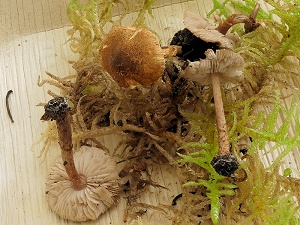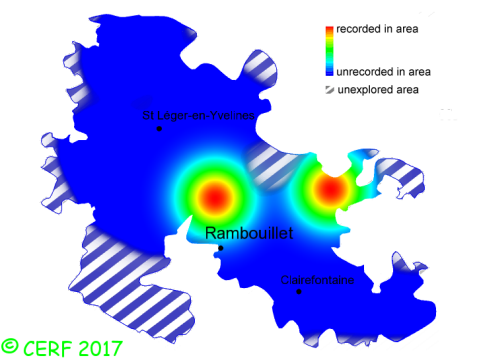| Lepiota castanea Quél. |
|
|
|
|
|
|
The cap is dark reddish-brown to orange at the centre, disrupting concentrically towards the margin, on a ochre-orange background, with a central umbo. The cap surface is scaly, not viscid nor sticky. The stem is with scales or bands under the ring, with a short-lived ring. The flesh is unchanging; the odour is unpleasant; its texture is fibrous. The gills are adnate, more or less crowded (nb of gills per 90° ~ 18 ). The spore print is white. This species is saprophytic. It grows on the ground, in the woods, on a rather rich in humus soil. The fruiting period takes place from July to November.
Distinctive features : umbonate cap, chestnut or dark brown on a white background; gills soon becoming yellow-brown Lepiota castanea is rare and localised in the forest of Rambouillet, and is infrequent, more generally speaking . | ||
|
page updated on 14/01/18

